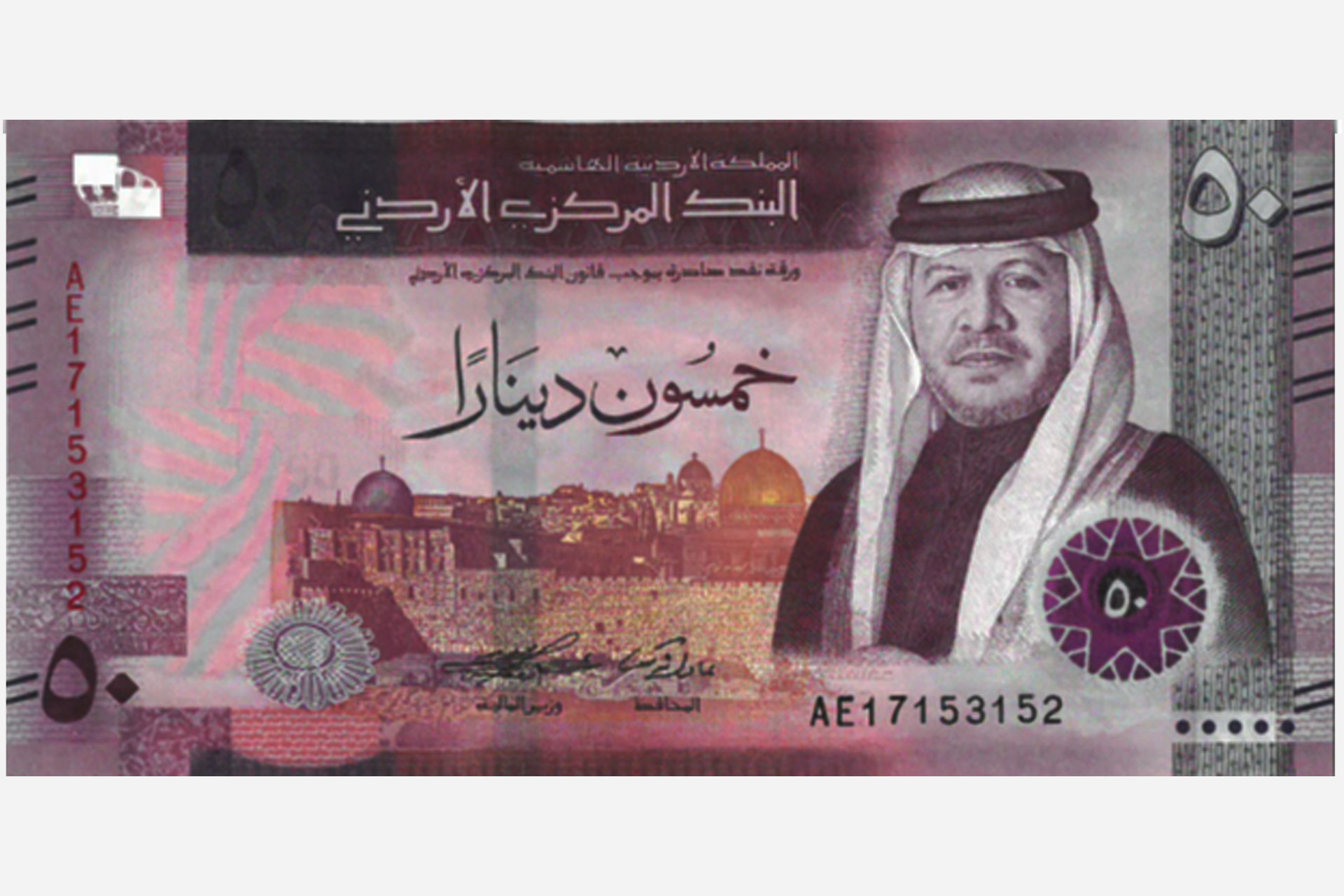Almost 20 years after the launch of the fourth issue of the Jordanian currency denominations, the Central Bank published yesterday, Saturday (January 7, 2023), pictures of 4 categories of dinar currency notes issued in the fifth issue.
The denominations that were offered are in denominations of 5, 10, 20, and 50 dinars, and they will not have the legal status as a negotiable currency until after they are offered alongside the denominations of the current issuance of banknotes, according to a statement by the Central Bank of Jordan.
"Denominations of Jordanian banknotes / fifth issue..." pic.twitter.com/btCCA4cJ5f
- Central Bank of Jordan - Central Bank of Jordan (@CentralBank_JO) January 7, 2023
The bank stated that it will announce later the date of offering each of the four categories (5, 10, 20, 50) that bear pictures of the Hashemite kings as they are in the fourth issue, whose specifications were previously announced.
According to the statement, "the new issue includes the latest security signs used in the world of the monetary industry, in addition to improving the quality of banknotes and extending their life in circulation, given the passage of nearly 20 years since the launch of the fourth issue of the Jordanian currency, and the emergence of the need to enhance the security signs and technical specifications of the banknote and improve the signs." Distinguishing categories of cash for the blind and visually impaired.
On December 26, the Central Bank of Jordan introduced a new issue of the "one dinar" banknote to the financial markets, bearing the image of the Sinaiticus pink sparrow instead of the flag of the Great Arab Revolt.
The Central Bank of Jordan law was issued in the year 1959, and the procedures for the bank to start its work were completed in early October 1964, to succeed the Jordanian Monetary Council, which was established in 1950.
Who are these Hashemite kings?
King Abdullah bin Al-Hussein
King Abdullah bin Al-Hussein bin Ali (Abdullah the First), whose image adorns the 5-dinar denomination of the Armenian currency, was born in 1882, and he is the second son of Sharif Al-Hussein bin Ali, Sharif of Mecca, and the King of Hijaz in 1917.
He is the founder of the Hashemite Kingdom of Jordan and participated in the Great Arab Revolt led by his father against the Ottoman Empire.
He concluded a series of treaties with the British government, the latest of which was on March 22, 1946, called the "East-Jordanian Anglo Treaty", under which East Jordan gained full independence.
King Talal bin Abdullah
The picture on the 10-dinar bill belongs to King Talal bin Abdullah, who was born in 1909 in Makkah Al-Mukarramah, and he is the eldest son of King Abdullah bin Al-Hussein, and on March 17, 1947 he assumed the mandate of the Covenant.
In 1951, King Abdullah bin Al Hussein was shot dead in Jerusalem, so his son Talal bin Abdullah took over on July 20, 1951, but he was relieved of his post on August 11, 1952 based on a medical report that determined his inability to manage the kingdom and issued a The National Assembly passed a decision appointing Prince Hussein bin Talal as King of Jordan, with the appointment of a regency council until the new king reaches the age of majority.
King Hussein bin Talal
King Hussein bin Talal, whose image adorns the 20 dinars denomination, was born on November 14, 1935 in Oman, and he is the grandson of King Abdullah bin Al Hussein.
He ruled the country for about 5 decades that witnessed the end of the British mandate and the establishment of the foundations of the monarchy, and he died on February 7, 1999, at the age of 64, of which he spent 47 years as king of Jordan.
King Abdullah II
The king whose picture is on the 50-dinar denomination - which is the highest denomination in Jordan - is the current king of the Kingdom of Jordan, Abdullah bin Al-Hussein bin Talal, born in the capital, Amman, on January 30, 1962.
In 1999, King Hussein bin Talal issued, before his death, a royal decree to choose his son, Prince Abdullah, as crown prince instead of his brother, Prince Hassan, and on February 7, 1999, Abdullah sat on the throne of the Hashemite Kingdom of Jordan after the death of his father.

